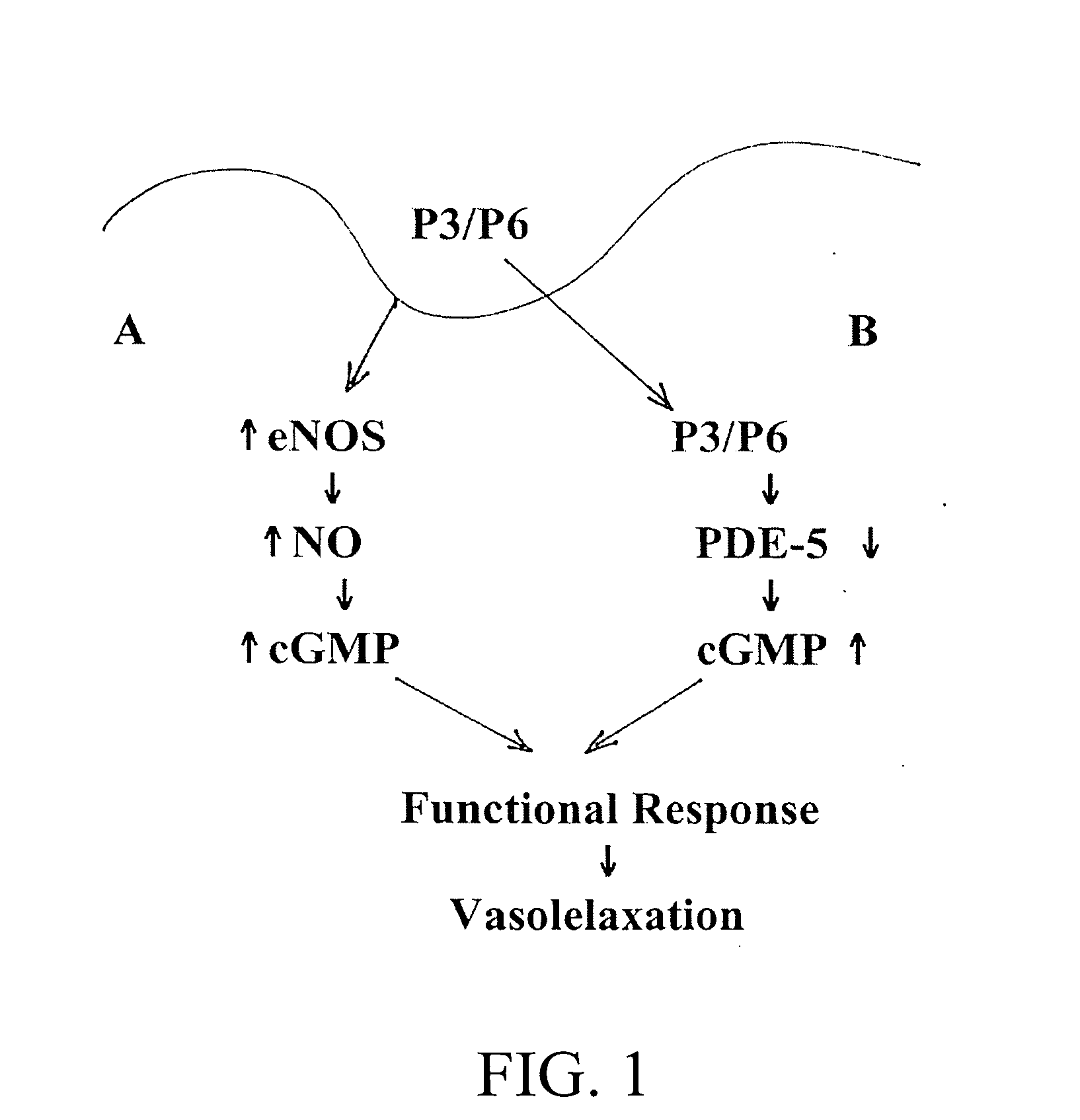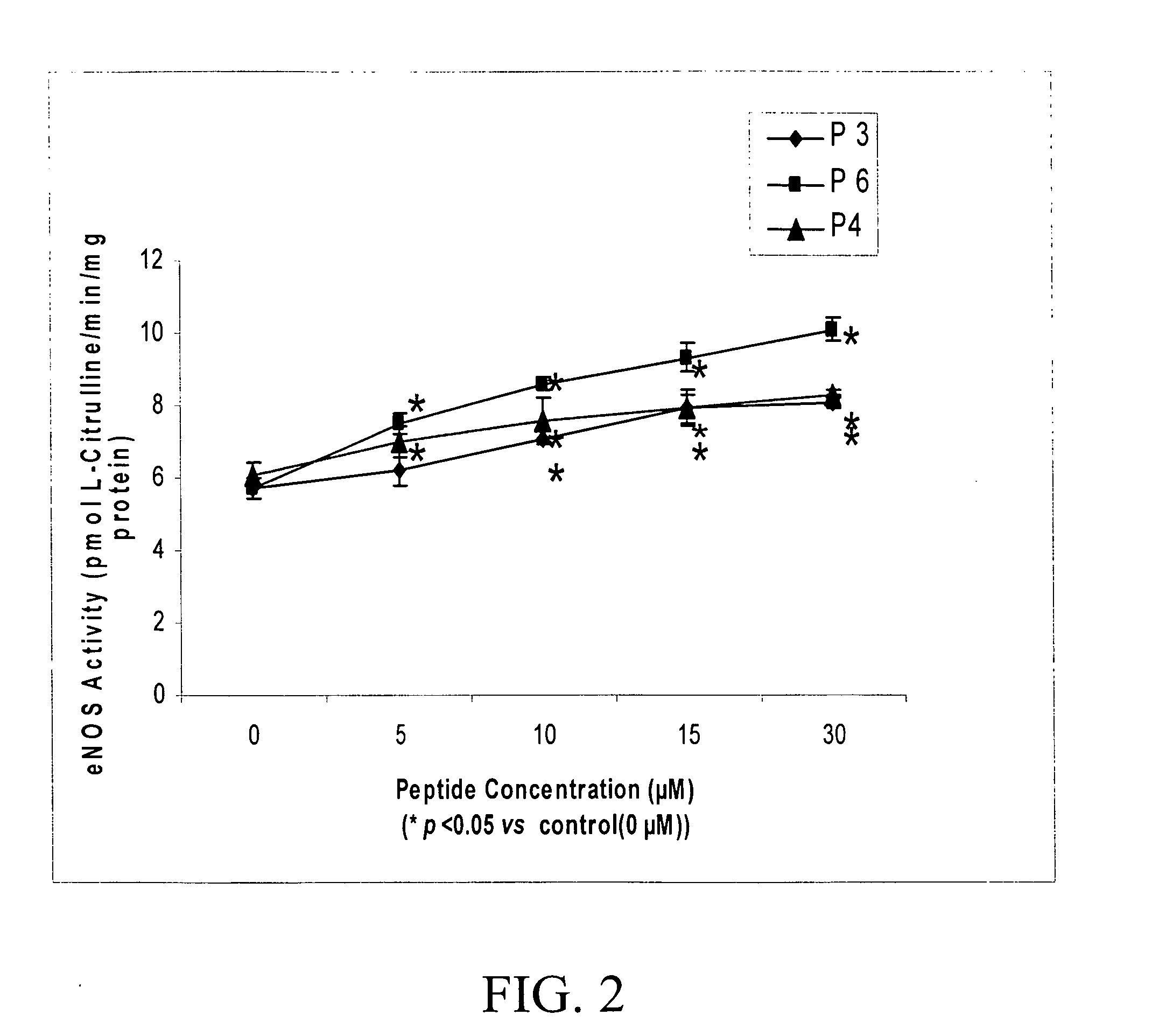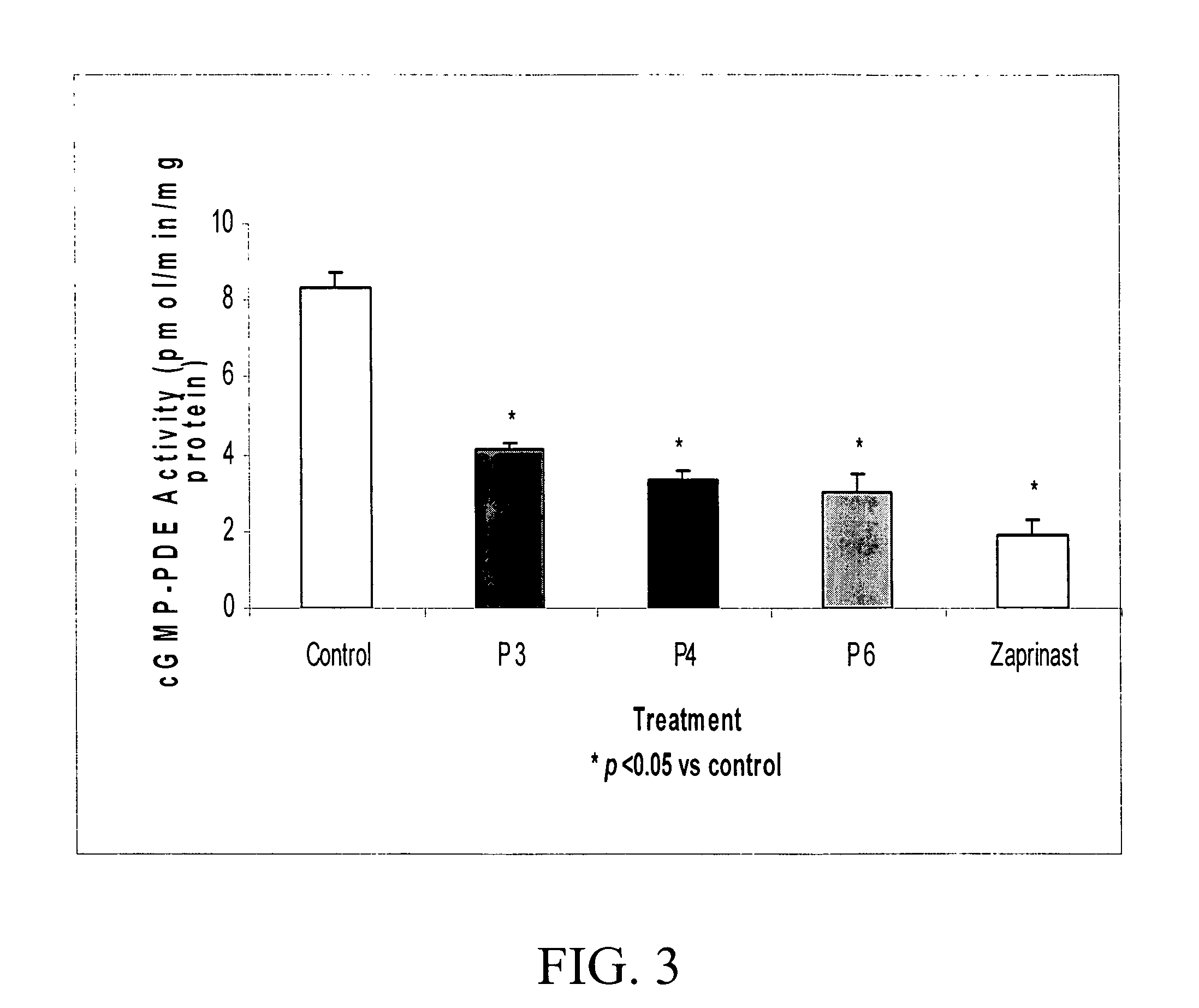Materials and methods for regulating blood flow
a technology of blood flow and materials, applied in the direction of anti-noxious agents, peptide/protein ingredients, extracellular fluid disorder, etc., can solve the problems of inability to regulate blood flow in the various tissues throughout the body, inability to know the storage mechanism of gas, and inability to achieve stable blood flow, so as to reduce the activity of cgmp-specific phosphodiesterase activity, improve the activity of endothelial cell nitric oxide synthase, and reduce platelet aggrega
- Summary
- Abstract
- Description
- Claims
- Application Information
AI Technical Summary
Benefits of technology
Problems solved by technology
Method used
Image
Examples
example 1
Effects of Peptides on eNOS
[0092] The effects of the synthetic peptides (P3, P4, and P6) of the subject invention on the catalytic activity of eNOS were examined using a cultured pulmonary artery endothelial cell (PAEC) model.
[0093] PAEC monolayers were incubated in RPMI 1640 medium with or without (control) the presence of varying concentrations of P3, P4, or P6 at 37° C. for 1 hr. After incubation, the catalytic activity of eNOS was determined as previously described by monitoring formation of [3H]-citrulline from [3H]-L-arginine (Chen, S., J. M. Patel and E. R. Block ER (2000) “Angiotensin IV-mediated pulmonary artery vasorelaxation is due to endothelial intracellular calcium release”Am. J. Physiol. Lung Cell Mol. Physiol. 279:L849-L856; and Patel, J. M., Y. D. Li, J. L. Zhang et al. (1999) “Increased expression of calreticulin is linked to Ang-IV-mediated activation of lung endothelial NOS”Am. J. Physiol Lung Cell Mol. Physiol. 277:L794-L801).
[0094] As shown in FIG. 2, the ca...
example 2
Modulation of cGMP-Specific PDE Activity
[0095] The synthetic peptides were evaluated to asses any association with modulation of cGMP-specific PDE activity in PAEC.
[0096] Cell monolayers were incubated in RPMI 1640 medium with or without (control) the presence of 10 μM each of P3, P4, P6 or Zaprinast for 1 hr at 37° C. After incubation, cells were washed, homogenized, and supernatant were collected by centrifugation at 15,000×g for 15 min at 4° C. PDE activity in the supernatant were measured by monitoring hydrolysis of 3H-cGMP as previously described (16).
[0097] As shown in FIG. 3, cGMP-specific catalytic activity of PDE was significantly reduced by P3, P4, and P6 compared to control. The loss PDE activity by P3, P4, and P6 was comparable to that by the known inhibitor of PDE, Zaprinast.
[0098] The results indicate that inhibition of PDE activity can result in diminished hydrolysis of cGMP resulting in increased cellular levels of cGMP. Furthermore, these data in conjunction wit...
example 3
Vasodilation Effect in Hypoxic Lungs
[0099] Specific pathogen-free female C57BL / 6J mice (30-35 g body weight) were anesthetized with pentobarbital (60 mg / kg, ip), and the lungs were excised from the thorax, ventilated with air (control) or with 0% oxygen for 1 hour at 60 breaths / min with a SAR-830 series small animal ventilator at a tidal volume of 0.6-0.8 ml / 100 g body weight. After development of hypoxic vasoconstriction, vasodilator response was monitored by addition of 15 μM each of P3, P4, P6 or zaprinast with or without the presence of nitric oxide synthase inhibitor (L-NAME, 100 μM). The vasodilatory response was continuously monitored as previously described (Hu et al. (2004) Am. J. Physiol. Lung Cell Mol. Physiol. 286:L1066-L1074).
[0100] The results are shown in FIG. 4. Also, FIG. 5 shows internalization of FITC-labeled P3 in lung endothelial cells.
PUM
| Property | Measurement | Unit |
|---|---|---|
| blood pressure | aaaaa | aaaaa |
| blood pressure | aaaaa | aaaaa |
| diameter | aaaaa | aaaaa |
Abstract
Description
Claims
Application Information
 Login to View More
Login to View More - R&D
- Intellectual Property
- Life Sciences
- Materials
- Tech Scout
- Unparalleled Data Quality
- Higher Quality Content
- 60% Fewer Hallucinations
Browse by: Latest US Patents, China's latest patents, Technical Efficacy Thesaurus, Application Domain, Technology Topic, Popular Technical Reports.
© 2025 PatSnap. All rights reserved.Legal|Privacy policy|Modern Slavery Act Transparency Statement|Sitemap|About US| Contact US: help@patsnap.com



